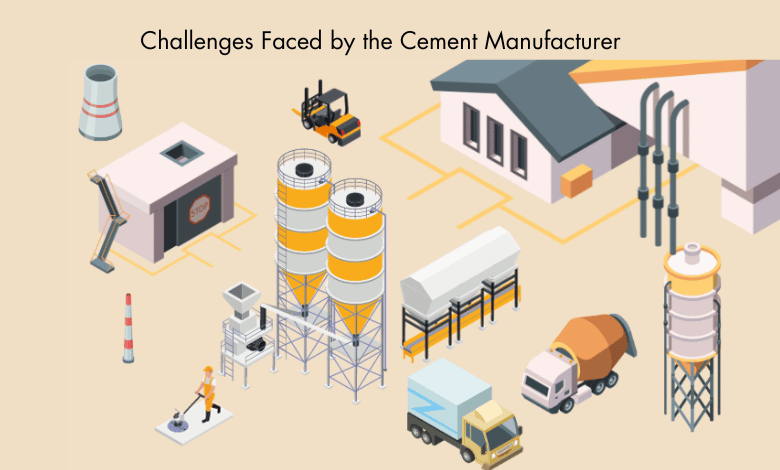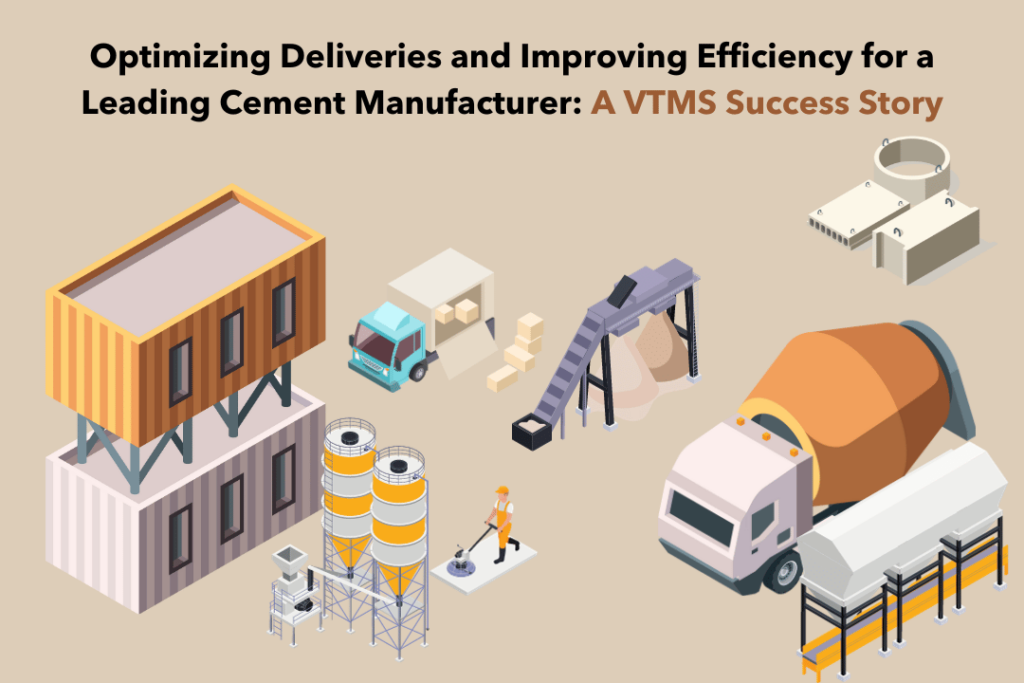Optimizing Deliveries and Improving Efficiency for a Leading Cement Manufacturer: A VTMS Success Story

A renowned cement plant has its headquarters in Gurgaon, Delhi, and operates in the entire North region of India.
However, one of the significant challenges faced by the company for years was the lack of visibility and real-time insights into the operational process. The dearth of information hindered not only proper functioning but also impacted good decision-making, resulting in delayed deliveries, dissatisfied customers, and increased costs.
Business Context
- The cement manufacturer was facing numerous challenges in managing their large fleet of vehicles.
- Operational managers were unable to get real-time updates on the fleet movement.
- Drivers adopted a casual attitude towards the delivery and were not following proper road safety guidelines.
- The cement manufacturer recognized the need for a transformative solution to improve operational efficiency and reduce costs.
- They decided to opt for our Vehicle Tracking & Monitoring Solution (VTMS)
- After the deployment, they saw an immediate improvement in terms of scaling their deliveries, fleet scheduling and preventing unnecessary idling.
- Moreover, the system prevented theft-related risks with its robust alert systems.
- Experienced great improvement in vehicle economy.
Challenges Faced by the Cement Manufacturer
Lack of Visibility
The cement manufacturer is one of the biggest dealers in the North region of India; hence they have to send a large number of vehicles every day. The absence of a real-time vehicle tracking and monitoring system made it difficult for our client to get complete visibility of the location, status, and condition of the trucks while on the move.
The lack of real-time information resulted in delays and inefficiency making it challenging to effectively manage and optimize the delivery process.
Inefficient Routing & Scheduling
Manual and outdated methods of routing and scheduling led to suboptimal utilization of resources such as trucks and drivers. It not only increases fuel consumption but also delays deliveries causing customer dissatisfaction and a potential decrease in revenue. The cement manufacturer was struggling to identify the most optimal routes and efficiently schedule the fleet.
Ineffective Communication
Ineffective communication between various stakeholders involved in the transportation and delivery process, including manufacturers, transporters, and customers, further exacerbated challenges. And lack of accurate and timely information led to confusion, misalignment, and increased response time to address unforeseen incidents.
Maintenance & Safety Concerns
Without a systematic process, the client was experiencing a heightened risk of vehicle breakdown, fuel theft, overspeeding, drivers taking the vehicles for personal usage without company knowledge, and unnecessary idling and tampering.
These issues incurred additional fuel and maintenance costs while also compromising the safety of the cargo and drivers.
How VTMS Helped?

Real-time Tracking & Monitoring
VTMS helped the company with real-time visibility into the location and status of the cement trucks. GPS-enabled devices installed in the vehicles allowed our client to monitor their exact location, status of vehicles (moving, parked, or idling), and speed.
VTMS has a comprehensive dashboard where the operation manager and anyone in charge of the vehicles can get all the details about the ongoing work. It further enables proactive decision-making and quick response to any issues that arise during delivery.
Efficient Scheduling & Routing
After installing VTMS, the cement company was able to maintain its entire fleet efficiently. The advanced algorithms and historical data analysis feature of the tool take into account factors such as traffic patterns, delivery time windows, and vehicle capacity to identify the most efficient routes for deliveries.
This helped reduce travel distance, and fuel consumption and improved overall resource utilization.
Seamless Collaboration & Communication
VTMS’ centralized platform offers seamless communication and collaboration among manufacturers, transporters, and drivers. As mentioned previously, fleet managers can track the current location of the vehicles and convey reliable updates about the delivery progress to customers.
Vehicle Maintenance & Driver Safety
The transport management solution facilitates optimum vehicle maintenance and driver safety management. By utilizing features like timely reminders on vehicle health, they avoided risks of breakdowns and associated delays, which ultimately helped them with improved operational reliability.
Various Alert Systems Improved Safety
Various alert systems on overspeeding, idling, tapering, stoppage, vehicle inspection alert, fuel theft alert, etc., enhanced overall safety. VTMS helped the cement manufacturer identify and address potential safety risks promptly, promoting a safer work environment for drivers and reducing the likelihood of accidents.
Conclusion
The adoption of VTMS has proven to be a transformative solution for the leading cement manufacturer, addressing key challenges in delivery processes.
The integration of real-time tracking, efficient routing, seamless communication, safety alerts, and data-driven insights has revolutionized the way deliveries are managed.
With improved operational efficiency, enhanced customer satisfaction, and increased safety and maintenance compliance, the cement manufacturer has achieved remarkable results and strengthened its competitive position in the industry.
To know how VTMS can help your company tackle issues with fleet optimization and efficient management and help you generate higher revenue, schedule a free demo today!
FAQ’S
What is the primary problem that the cement manufacturer was facing before implementing VTMS?
The primary problem the cement manufacturer faced was a lack of visibility and real-time insights into their operational process. They had difficulty tracking the location, status, and condition of their fleet of vehicles, leading to delays and inefficiency in managing deliveries.
How did VTMS improve the efficiency of the cement manufacturer’s operations?
VTMS improved efficiency in several ways. It provided real-time updates on fleet movement, enabling better tracking and scheduling of deliveries. It also helped prevent theft-related risks with robust alert systems and promoted better vehicle economy.
How did VTMS address the issue of inefficient routing and scheduling?
VTMS addressed inefficient routing and scheduling by offering data-driven insights into optimal routes and efficient fleet scheduling. This reduced fuel consumption, minimized delivery delays, and ultimately increased customer satisfaction.
What role did effective communication play in the success of VTMS for the cement manufacturer?
Effective communication was crucial to the success of VTMS. It bridged the gap between various stakeholders involved in transportation and delivery, allowing for accurate and timely information exchange. This reduced confusion, misalignment, and response time to unforeseen incidents.
How did VTMS help in addressing maintenance and safety concerns for the cement manufacturer?
VTMS helped address maintenance and safety concerns by enabling systematic monitoring. It reduced the risk of vehicle breakdown, fuel theft, overspeeding, and unauthorized vehicle usage. This not only saved on fuel and maintenance costs but also enhanced the safety of the cargo and drivers. Is this conversation helpful so far?